1-4 Players
Addition to 20

Hive can be played as a single-player or a multiplayer game and it encourages students to practice addition facts by finding the sums of the numbers 1-10. The players practice addition, improve their mental math, and gain automaticity. You can never have too many games for practicing math. A bigger variety of games means more engaged students.
Check out Multihive a different version of this game for practicing multiplication and division.
Material:
- Print out game board
- Two 10 sided dice. Learn how to build your own here.
- Color pencils (different color for each player.)
Goal: Get the most points by creating the correct shapes/arrangements in the hive.
How to play:
Multiplayer
The players take turns rolling the dice. At their turn, they roll the dice and color the sum of the numbers they got. The colored tiles of a player must form one of the shapes below to earn points. Part of the strategy is that the players can color tiles to stop the opponents from completing their shape.
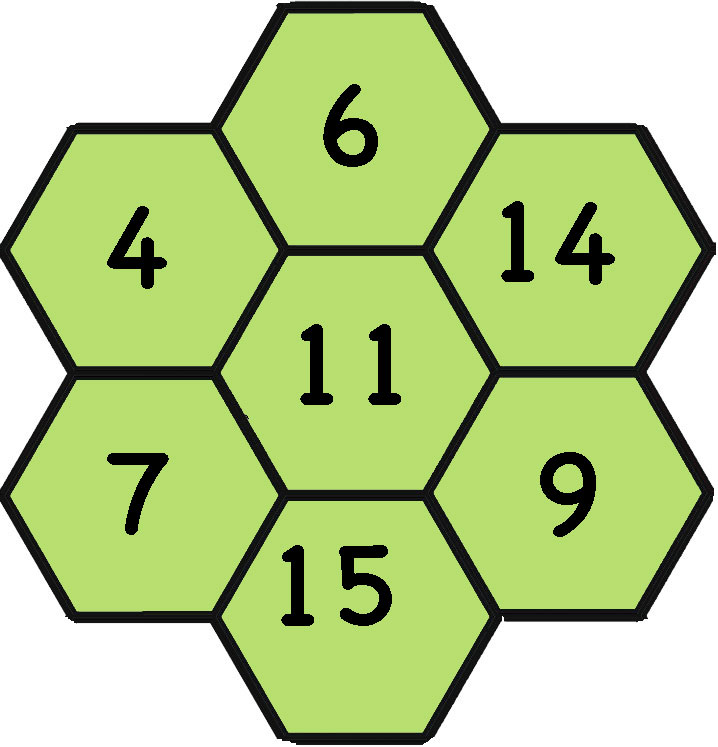
Closed flower – 7 points

Open flower – 6 points
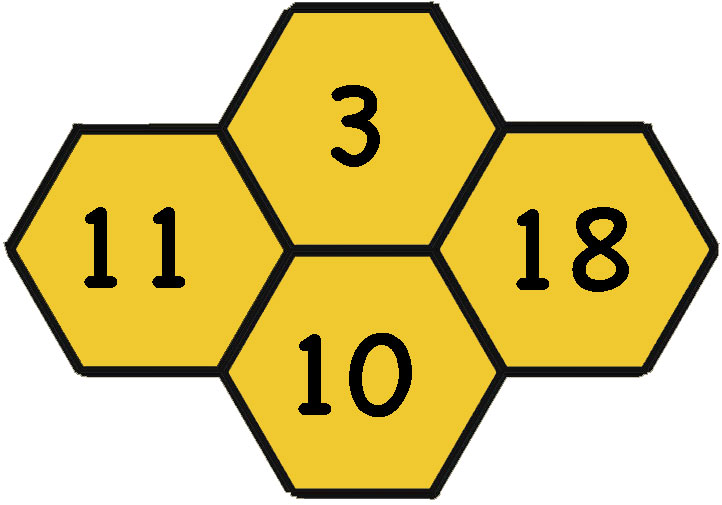
Spaceship – 4 points

Bone – 5 points
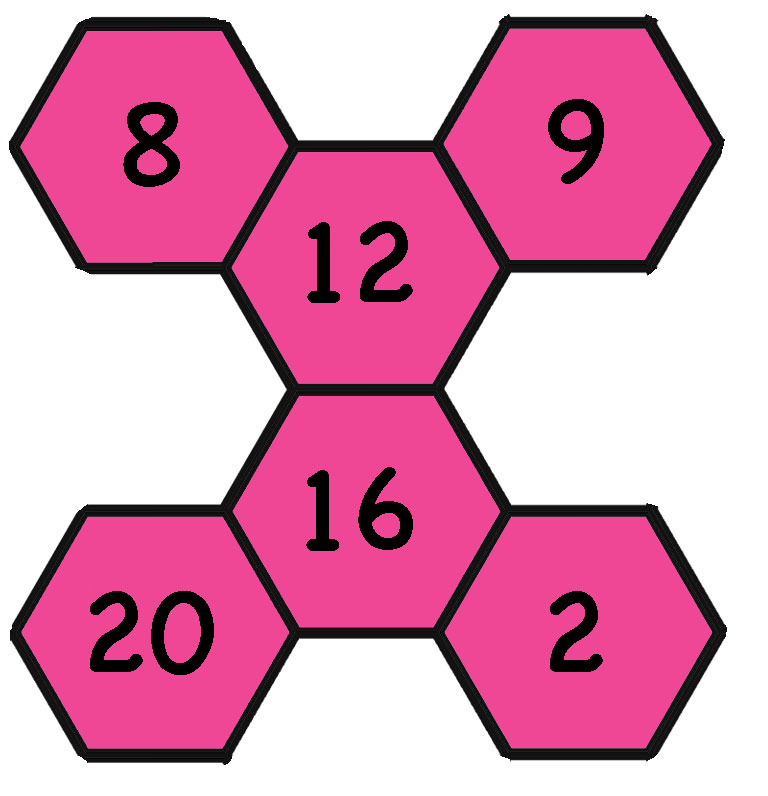
Trophy – 6 points
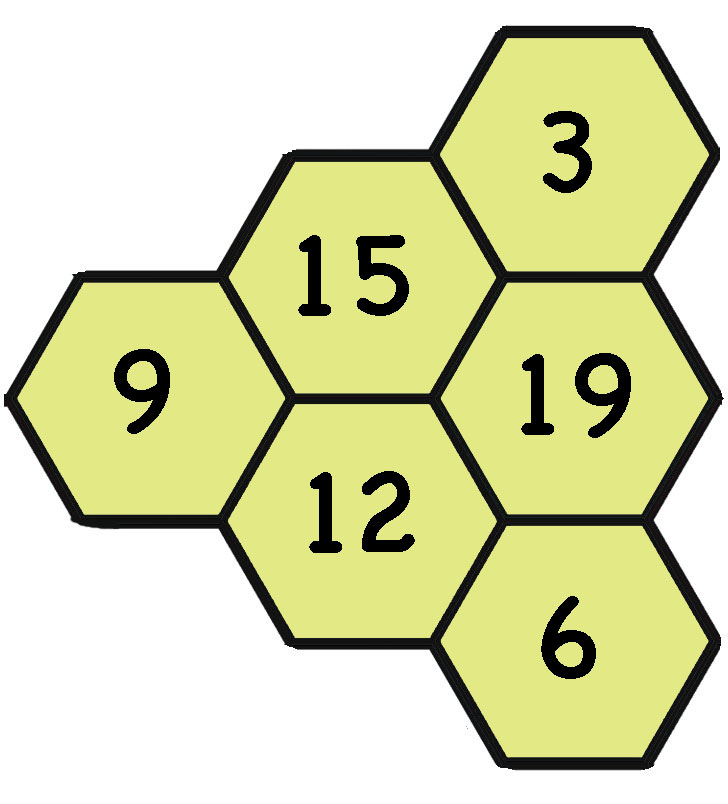
Arrow- 6 points
The game continues until there are no more tiles combinations to color.
The winner is the player with the most points. Only completed shapes (above) earn points.
Provide manilulatives for addition for the students to use when they need to ( number lines, dienes blocks, counters).
Single Player:
Players challenge themselves to see how many of the required shapes they can create by rolling the dice 20, 30 or more times.
Modify:
You can decide to use your own shapes/arrangements for the game and name them as you like. We liked these ones. Make sure that you color them on a sample board for everyone to refer to. You can also use the game as a math station or even assign it as homework. I found that many students like to play by themselves and design their own patterns. They prefer this than a simple addition worksheet.
New idea!
Due to the social distancing guidelines this year I used “Hive” as a single-player game and turned it into a math art activity as well. The students played the game as a single-player one, however, they were allowed to color their answers with different colors making their own patterns instead of the ones mentioned in the game instructions. They created beautiful patterns that we displayed on our classroom door.
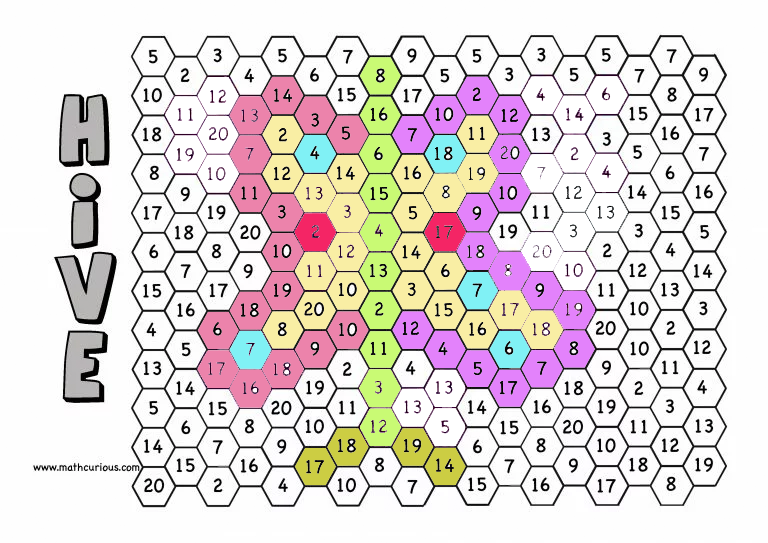
Here are two game boards for you to choose from. The first one has less and bigger tiles and the second has smaller tiles. Use the second if you are playing with more than 2 players. There is also a game board with samples of the shapes/arrangements to make.

